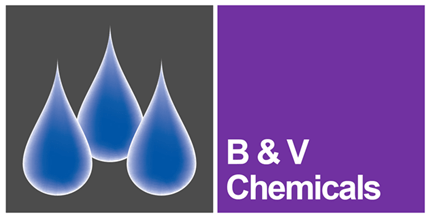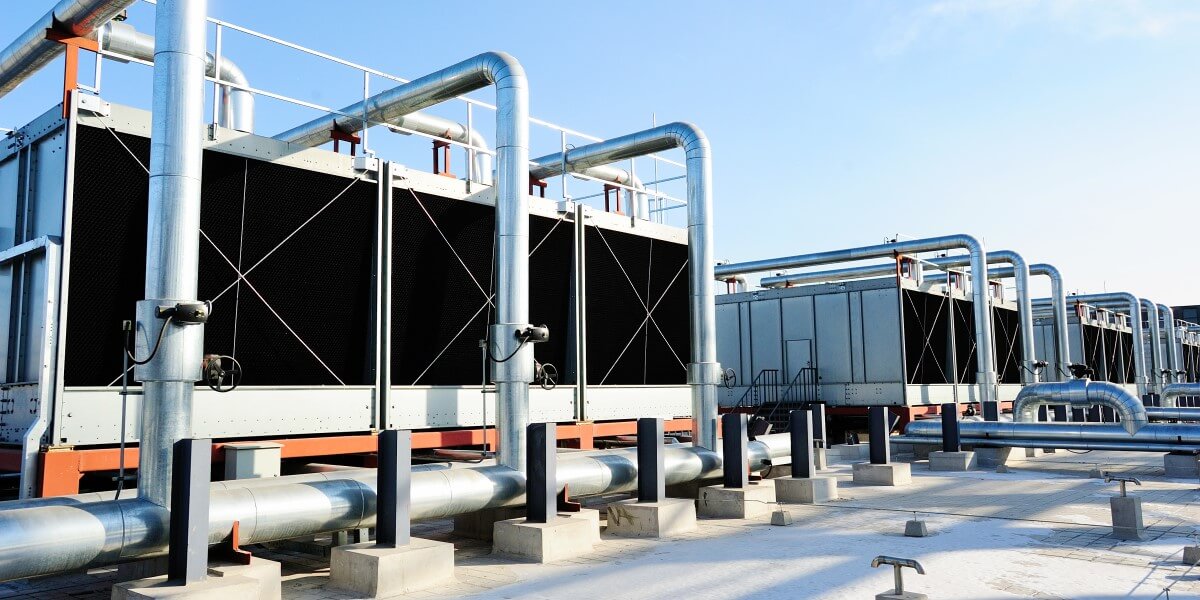It's likely that you have a significant number of cooling tower water treatment contracts with your end customers which are ‘fixed price contracts’.
The net aim of these fixed-price contracts is to deliver optimal performance and results to the end customer and to effectively control costs so that the cost of the treatment regime remains within this pre-set fixed price.
One area for optimisation is the use of non-oxidising biocides versus bio dispersants when dosed in conjunction with oxidising biocides in cooling towers or evaporative condensers.
Continuous low-level halogenation is probably the most effective and cheapest biocide programme. This involves the use of chlorine or bromine, applied as liquids or via side-stream brominators. In the UK, bromine is favoured because of its efficacy at pH above neutral i.e. the slightly alkaline pH’s generally found in cooling towers.
The value of continuous dosing is that servicing visits can be conducted at any time, as the conditions within the system should remain relatively consistent.
Regular testing and TVC and/or Legionella sampling can therefore be carried out at the time of any service visit with the confidence that the results are likely to be meaningful and repeatable. This type of continuous halogen dosing also lends itself to continuous feedback control.
We need the results from all site sampling or testing to be both meaningful and in the specification and the treatment programme must be designed to satisfy legal requirements. On fixed-price contracts treatment programmes, site service and sampling must be technically correct and within the budgeting constraints of the fixed price contract.
Bio dispersants and non-oxidising biocides
These two chemicals are not the same and do not do the same thing:
- Biocides are molecules which kill when present at a sufficiently high concentration and for a sufficiently long time (contact time). In general oxidising biocides are effective at lower levels and work within shorter contact times than non-oxidising biocides.
- Bio dispersants do not kill. They are surfactant chemistries which lower surface tension and help the penetration of chemicals into deposits and biofilm; loosening and “dispersing” them in the bulk water, where further contact with biocides can occur.
When you understand the function and the action of biocides and bio dispersants it is very apparent that both the biocide and the bio dispersant must be dosed simultaneously.
Use of non-oxidising biocides
Some liquid non-oxidising biocides such as sodium hypochlorite and sodium bromide will contain a bio dispersant within the formulation of either the sodium hypochlorite or sodium bromide formulation. This means a low dose of bio dispersant will always be consistently present within the system. In the majority of cooling systems using this treatment regime, the build-up of biofilm should be prevented within the cooling tower.
HSG 274 refers to the use of supplementary non-oxidising biocides, and these can have a role in cooling tower water treatment. It is important to consider that if the supplementary non-oxidising biocides are not added correctly, they will not kill or increase dispersancy. They will also add significant cost and consume halogen (i.e. chlorine or bromine), and can therefore actually decrease biocidal efficacy.
Halogens are the most cost-effective biocides. Continuous values of 0.5-1.0 ppm Cl2 or 1-2 ppm Br2 are effective. Non-oxidising biocides should not be added when halogen is being added. If the system is off (e.g. over a weekend) and the halogen is not being dosed, a dose of a suitable non-oxidising biocide should maintain microbial control while the cooling tower is not in use for a couple of days.
Typically, a dose of 100 ppm – 200 ppm of non-oxidising biocide is needed to maintain microbial control. The recommended dose rate of the non-oxidising biocides produced by B & V Chemicals is stated in the product data sheet for each product.
Our technical department can always be consulted if any further information is required regarding the use of any of the biocides in our range. The recommended contact times for these non-oxidising biocides varies from 2-12 hours. Allowance must be made for this if purges are operating. A non-oxidising biocide will only work effectively if it is present in the system at the correct dose rate for the duration of the recommended contact time.
Use of bio dispersants
A bio dispersant can be useful both to remove biofilm from a system and to prevent the development of biofilm within a clean system. As it is known that Legionella bacteria selectively grow under layers of biofilm, keeping a cooling tower biofilm free is of obvious importance. The addition of 5 - 10 ppm of Biosperse 2 can be used as a shock dose to cooling towers, where contamination with biofilm is visually apparent or where persistent high TVC counts are an issue. It is wise to have an antifoam such as AF 2 ready in case of excessive foaming.
As stated earlier, most bio dispersants are generally surfactant based and by their very nature, these will foam at higher levels or in areas of high agitation.
If the water gets very dirty and brown foam is produced after the addition and recirculation of the bio dispersant, it is likely that high levels of deposit and biofilm are present within the system. The system may therefore benefit from an additional dose of bio dispersant.
However, this will depend on the design of the system and the level of foam produced. If antifoam dosing is required, use only the minimum recommended dose rate initially as some antifoams can themselves add to deposits within the system if overdosed. White foam indicates overdosing of the dispersant. Lack of dirty water indicates a clean system and no benefit. On a fixed price contract – this proves you do not need regular additional doses of bio dispersant – so do not use it!
Summary
Switching to 5 - 12.5 ppm of Biosperse 2 on a weekly basis can be considered as a lower cost option than using non-oxidising biocides on certain systems. This combination of continuous oxidising biocide dosing with appropriately timed regular bio dispersant dosing is consistent with HSG 274.
Plus, it is a good way of operating the system and a more cost-effective treatment regime than using non-oxidising biocides in systems where these are not actually a necessary part of the treatment regime.
To learn more about using biocides and bio dispersants for cooling tower water treatment, please get in touch with our technical team who will be happy to help.






